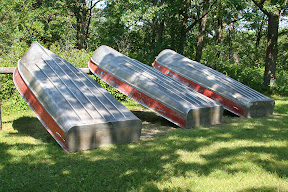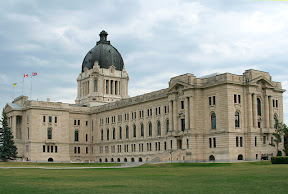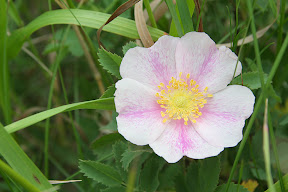2007 Vacation: Day 10 Summary
Day 10 Summary
Hallock, Minnesota to Brainerd, Minnesota
The final day of my 2007 vacation began in Hallock, in Minnesota's far northwestern corner. Although the city only has 1,196 residents, it nevertheless is one of the most important cities in its locale in Minnesota. One of the reasons for this is undoubtedly because it is the county seat of Kittson County.
I don’t know what it is, but I really like the northwestern corner of Minnesota. It’s a unique part of the state due to its connectedness with Canada. Ecologically speaking, the region is also quite unique, since it lies within Minnesota’s only example of a tallgrass aspen parklands system. As such, the scenery can be described as being a transition zone between tallgrass prairie and aspen forest. There really is no other place in Minnesota that looks exactly the same.
Kittson County is one of the only counties in Minnesota that has no natural lakes. The sole lake in the county, Lake Bronson, was created in the 1930s when a dam was built along South Branch of the Two Rivers.
As it turned out, Lake Bronson was one of the tourist attractions I saw in the region. The lake, and the mixed tallgrass prairie/aspen forest landscape that surrounds it, are on display at the beautiful Lake Bronson State Park. All in all, I think I ended up spending a good couple of hours wandering around the park. Not only is there good scenery to see, but also some historic buildings that date back to the park’s construction by WPA and CCC crews during the Great Depression.
The trek back home to Brainerd started in earnest once I left the park. Although there are many ways to get to Brainerd from the city of Lake Bronson – adjacent to the park – I chose the one that would bring me through Grand Forks. I wanted to check out the city to ensure, I suppose you could say, that everything still appeared the same as when I left in May. For the most part, it did.
As the drive from the park to Grand Forks and Grand Forks to Brainerd was largely uneventful, and covered no territory that I haven’t already more or less thoroughly covered on here, I’ll just keep things short and say I made it home sometime around 7 in the evening. And with that, my superb 2007 vacation came to an end.
The first fourteen pictures were taken in Lake Bronson State Park

These three pelicans were looking for lunch in the lake

An example of tallgrasss prairie within the park

at trail marker #9 along the park's interpretive trail

There were a lot of butterflies flying around in the prairie

This depression was caused by a soil mining operation that was once located here

Another example of tallgrass paririe

There were a lot of these purple flowers within the prairie - I don't know what these are called, but I believe they are an invasive species

So purple!

The water tower/observation tower

The view looking south from the tower

The view looking north from the tower - here's an example of an aspen forest within the park

Even on a Tuesday morning, there were people enjoying the beach along Lake Bronson

Another view of Lake Bronson

Nobody was canoing on the lake at the time

Scenery on a country road near Hawley
Videos:
Along the Shore of Lake Bronson
http://www.youtube.com/watch?v=fgsP30mUoqk
























































